Rotation schemas are really common, and many children exhibit this repeating behavior pattern.
I’ve taught in the early childhood phase for 12 years, and in that time I have trained myself to first look out for schemas, and second to act on them.
Rotation schemas can be supported through so many different activities – whether it be rolling tires, blowing windmills, or using tools like spanners.
In this article, I’m going to dive into the best 31 rotation schema activities. These are all simple and tried and tested ways of supporting children that exhibit an interest in rotation.

What Is A Schema?
A schema is quite simply a repeated pattern of behavior. (Source)
For example, if a child is really interested in enclosing objects (such as wrapping up stones in paper), or being enclosed themselves (such as they build a den around themselves), then they are showing an enclosure schema.
Schemas allow children to explore ideas and thoughts.
They also help them express their thinking.
Supporting Schemas
The really important thing is that by supporting schemas, we help a child to think, flourish, and make excellent progress through play.
That’s the big point!
If a child has a rotation schema, for example, them helping them explore this further helps the child make progress, and also develops their minds and their thoughts.
What Is A Rotation Schema?
Children that exhibit a rotation schema enjoy anything that turns or rotates.
They are developing an understanding of how objects and themselves move.
They are beginning to understand a sense of body positioning, balance, and coordination. (Source)
Look out for – an interest in any object that rotates, in rotating their own bodies, or in instigating rotation in anything else.
31 Rotation Schema Activities
Here are some of the best ways to support a rotation schema.
Many of these are very simple ideas, that just require a few simple resources, and the child can access independently:
1. Winding Magic Wands
This is a beautiful activity that just requires some sticks and some materials to wind with.
If you are in an environment with plenty of sticks, then encourage the children to first select a stick to be a wand.
Then have a selection of materials that you can wind around the sticks.
You could use:
- Colored wool
- Pipe-cleaners
- String
The children wind the materials around the sticks. They can make beautiful patterns, or even add other materials, such as feathers or leaves.
The wands can be used for making spells, potion-making, and other types of adult-led or child-led play.
2. Winding Worry Dolls
This is one of my favorite early mindfulness activities. You can find a selection of the ultimate mindfulness activities for preschoolers here.
Get a large stick, and then wind colored wool around it.
Then add a face of some kind to the stick.
This is the ‘worry doll’.
A large stick worry doll like this can be used at circle times. The children pass around the doll, and one at a time each say one thing that is worrying them.
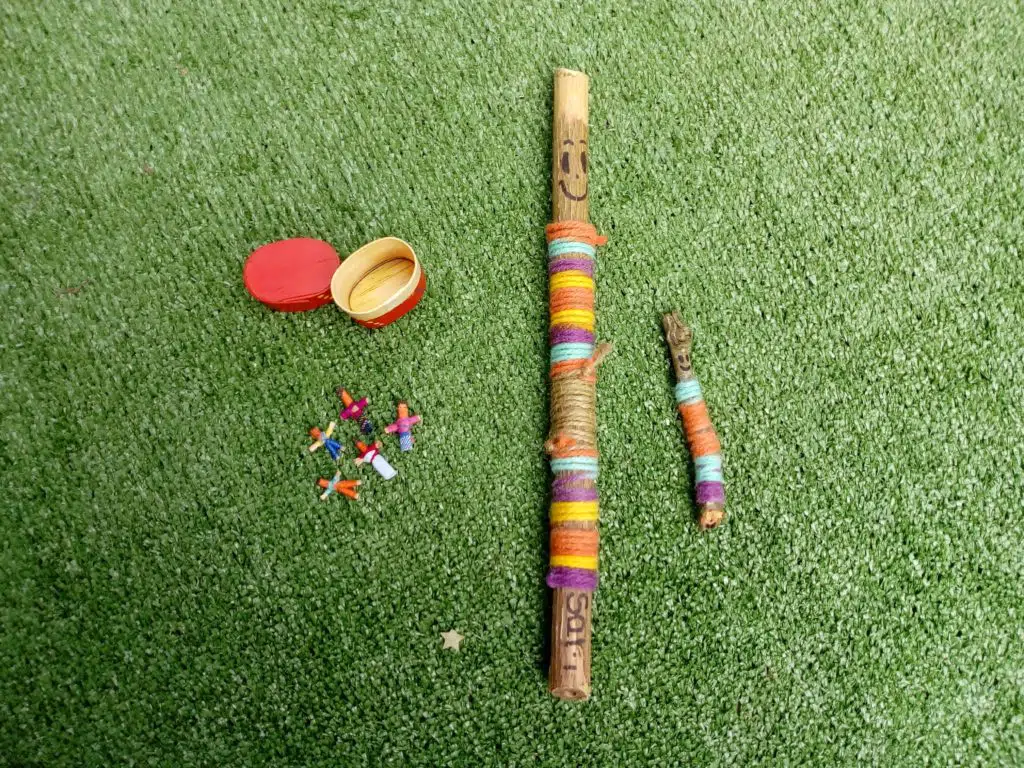
3. Tires To Roll
Having a range of tires to roll around the space supports a rotation schema brilliantly.
You could have a range of sizes of tires.
Some children will enjoy rolling them around a course or path.
4. Rolling Objects Down Ramps
You can make simple ramps using something like a section of wood, balanced on a box.
Children can roll objects down like balls, tubes, tires, or toy cars.
They can experiment with different gradients of ramps.
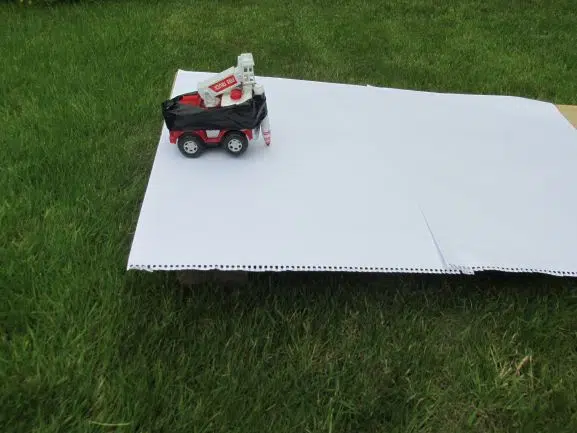
5. Rolling Down Slides
All the same ramp activities can be done on a slide.
6. Spinning Round In Tires
This is an excellent activity for supporting rotation schemas that also involve an element of risky play.
Tie a rope around the inside of a tire with a secure knot, and tie it to either a tree, a post, or some other protruding object.
Children can climb into the tire and spin themselves around in it.
This is also a great activity for children that demonstrate an interest in an orientation schema (i.e. having an interest in being upside down).
7. Large Wheels (e.g. Bicycle)
Any wheels in general that you can find are great for children with rotation schemas.
Old tricycle or bike wheels are great to quite simply be rolled around a space.
8. Wheel Art
Wheels such as bike wheels are also great for making messy art!
Have a range of plastic plates or shallow troughs with paint in them.
Dip the wheels into the paint, and then roll them across giant wallpaper or bedsheets on the ground.
9. String Or Wool To Wind Around Objects
Some children will do this for a long time after first being shown.
Simply wind wool or string around different objects.
Things like leaves, conkers, sticks, stones, tubes, pipes, or whatever else that you have in your area.
This has many fine and gross motor benefits, as well as supporting a rotational schema, and all the brain development and extra engagement that you get from that.
10. Balls
All types of balls in general are great for this type of schema.
11. Screw Drivers
There is a range of tools that work hand-in-hand with rotation schemas.
Screwdrivers are a good one for this. You can:
Use large screw-drivers under supervision, and attempt screwing screws into soft surfaces – like a pumpkin
Use toy screwdrivers for a simpler and more easy activity to attempt independently.
12. Spanners
Same as with the screwdrivers, children can either use toy spanners, or they can explore loosening and tightening bolts on cogs using the ‘real’ ones out of a toolbox.
13. Drills
There are many ways for children to use simple drills.
A good one to start with is a hand-held drill like in this picture:
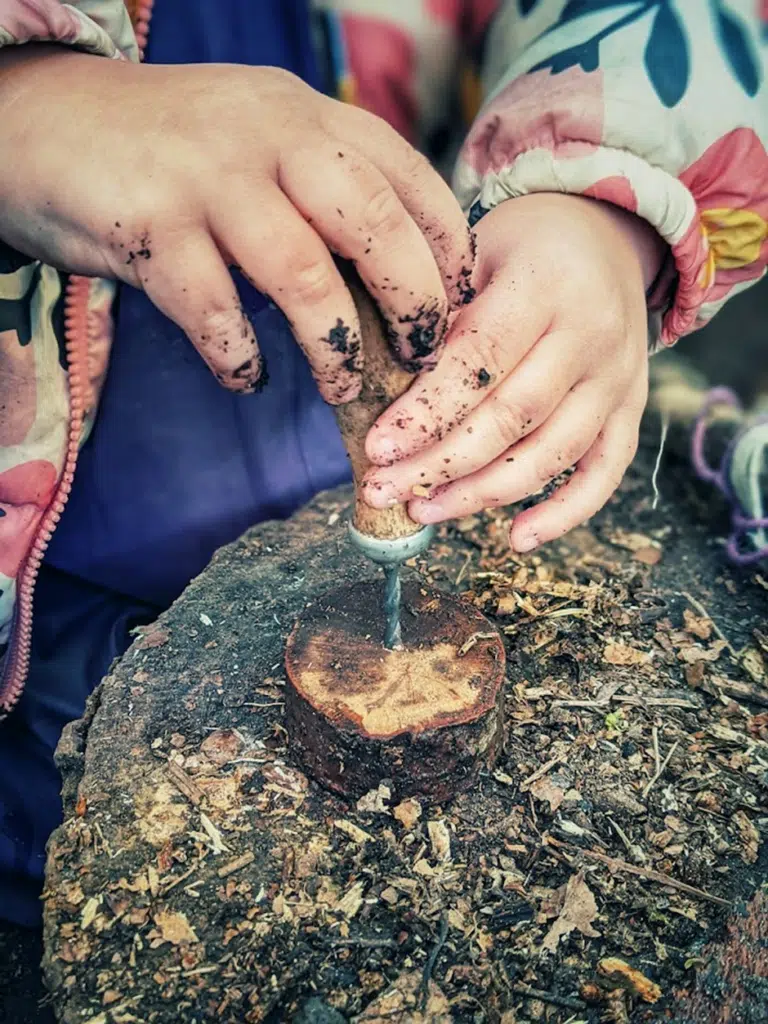
In this picture, the child is using the drill to create a small hole in this log slice. They then put a twig in the hole, which later became the mast of this nature-ship:
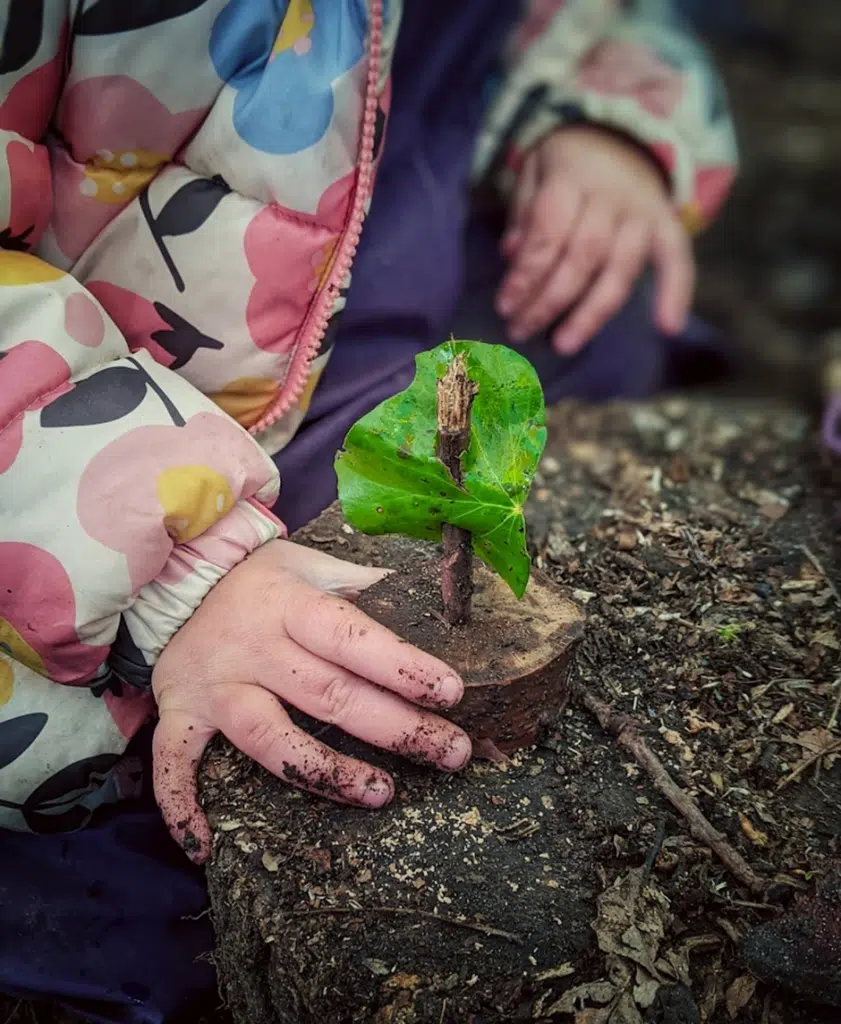
Small hand-held drills like this are simple to source and can be used safely by several children working with one adult.
If you use a large handheld wood drill, I would do this activity with 1:1 supervision.
Plastic toy drills are also a good addition to construction areas.
14. Waterwheels
There are often lots of rotation schema opportunities present in water play.
Adding things that spin like water wheels creates lots of added curiosity for these children interested in this schema.
15. Roundabouts
Roundabouts are, of course, one of the staple parts of a traditional children’s playground.
And they are perfect for rotation schemas.
Younger children can watch them, or travel on them at slow speeds. Older children can take on more speed, and really experience rotation and pace together.
16. Disco Balls
Rotation schemas are not all about touching and turning things with your hands.
There are some items you can integrate into a setting that visually attract children with a rotation schema.
A disco ball is an excellent way to really connect with children on a visual level. Children will be fascinated by the mixture of the turning object, and the changing light effects that result.
Disco balls also create light effects on the wall and ceiling, which are an abundant source of curiosity.
17. Laundry In Washing Machines
Here’s a nice simple one.
Many children are fascinated by laundry in washing machines. They will watch this visual rotation over a long period.
Many children may also try to put things into an empty washing machine, and observe how they move!
18. Toy Vehicles
These are a huge favorite among a large proportion of children, and they really inspire the curiosity of those interested in rotation schemas.
Provide plenty of toy cars and other vehicles, and you will see lots of the following:
- Children put their eyes at the level of the wheels
- Experimenting with rolling the cars over different surfaces
- Rolling them down ramps
- Spinning the wheels with their hands, just to see them spin
19. Watching Pram Wheels
Here’s another classic activity that anyone who has interacted with babies and toddlers is likely to witness.
This is one of the earliest times you might see a rotation schema.
Some children are fascinated by pram wheels, bicycle wheels, or whatever other wheels roll into their vicinity.
20. Circular Mark-Making
One of the first types of early writing you will often see will be a kind of circular motion.
These squiggles and wiggles are one of the simplest ways to first put pencil to paper. They are often accompanied by lots of dots.
You can support children by creating circular marks, by:
- Providing lots of resources to independently make marks with (such as sticks in the mud, big pens, chalks on wallpaper, etc)
- Modelling the process
- Providing lots of big surfaces to draw and write on, such as chalk-boards, big paper, the ground, etc
21. Mark-Making To Music
One of my favorite early writing activities is to make marks for music.
Get the children to sit around a huge piece of wallpaper with big chalks.
Put some pumping music on, and model how to create big circles on the paper to the music. Try and move to the beat of the music when you do this.
The children really enjoy this combination of dance and writing.
Circles are one of the simplest shapes to try first when you do this (along with dots and straight lines).
22. Windmills
There are of course many types of windmills, and these all spark curiosity in rotation.
Taking children on trips to see real working windmills would be beneficial and very exciting for some.
You can get plastic windmills such as in this picture:

These are great for experiencing the wind. You can also blow on them and watch them spin.
23. Natural Mobiles Hung From Trees
There are all sorts of ways of making natural mobiles.
A simple one may look something like this:
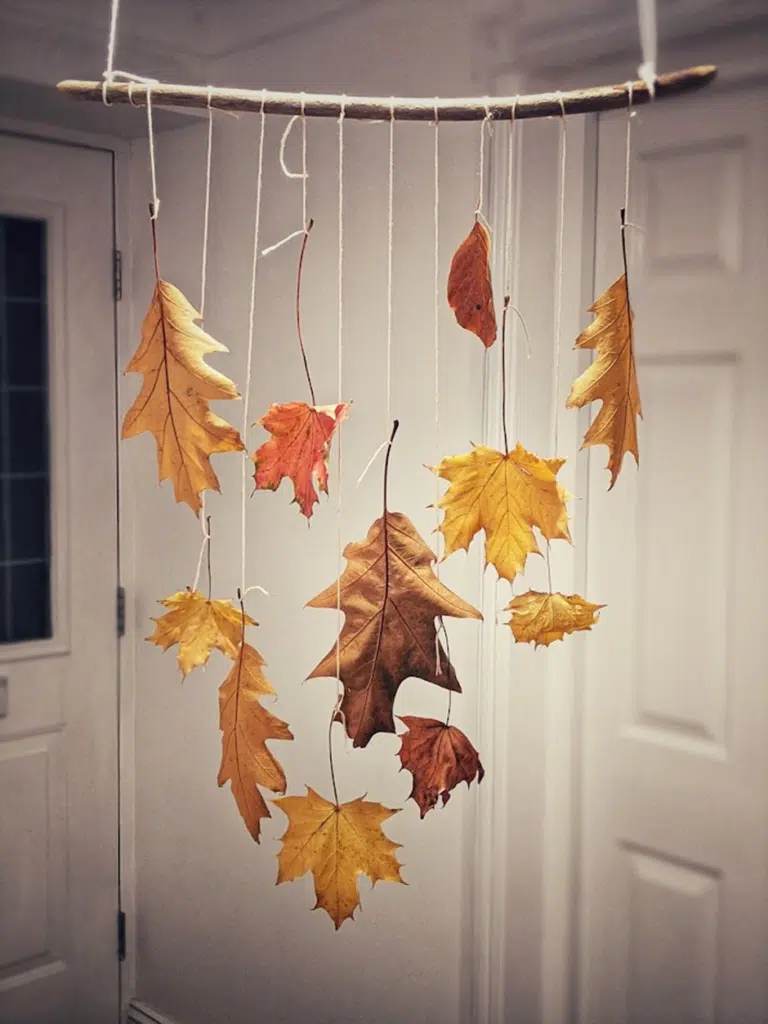
Just some natural objects suspended by a string from a piece of wood will do the job well.
When put outside, these objects will swing and rotate in the wind.
Other ways of making mobiles include:
- Pinning up objects onto a clothesline
- Drilling holes into log slices and suspending them on a string from a stick
24. ‘Helicopters’ (Samaras)
There are several trees of the Saramas family that create these fantastic spinning, twirling seeds, that around here we like to call ‘helicopters’.
You’ve guessed it – these are fantastic for rotation schemas.
You can:
- Simply watch them falling from a tree
- Throw them in the air
- Throw several in the air at once
- Throw them and try to catch them
25. Helicopter Toys
You can also get simple wooden or even plastic helicopter toys.
These are great for all sorts of imaginary vehicle play, as well as having the added fascination that their rotas spin, and so inspire the curiosity of those interested in rotation schemas.
26. Large Hoops
These can be used for all sorts of activities, including:
- Rolling on a flat surface
- Rolling down slides, ramps, or hills
- Trying to spin them back to you
- Throwing them like a frisbee
27. Salad Spinners
These are fantastic natural kitchen appliances that will deliver all kinds of learning experiences.
I really enjoy doing art activities with these salad spinners. This is messy, but brilliant fun. On huge paper, such as wallpaper, place the salad spinner, and pour lots of paint of different colors into it.
Then simply spin the salad spinner!
You get a fantastic, spattering, and firework-style paint effect, as the paint splatters out onto the paper.
Salad spinners are a great addition to a mud kitchen.
You can spin mud or bark in them.
You can also place them in role-play areas, or in a construction zone.
28. Spoons
These are one of the best and simplest ways of supporting rotation schemas.
Wherever there are lots of spoons, children just love to mix and stir!
They are particularly good for:
- Mixing mud
- Stirring puddles, and adding things like paint to puddles also
- Stirring and creating magic potions out of natural objects
- Creating spells
- Stirring the water in a tray
- Making marks in mud or other malleable materials
29. Whisks
These are also excellent tools that can be added to a variety of different learning experiences.
You can use them in a mud kitchen. Children really enjoy whisking muddy water, bark, mud, and any other substances they can find.
Whisks are also an excellent addition to a water tray.
You can also whisk puddles around the outdoor area, and you can even try them in the sand.
You can get whisks where you turn a handle to make them spin, and others that are simpler and are just handheld. Both would be a good addition to your learning environment if you can get hold of them.
30. Large Circle Games Outdoors
Pretty much any circle game with a bit of movement will have some kind of link to rotation schemas.
A classic one is Fruit Salad.
You probably know how to play – but just for the record, the children sit in a circle, and the adult gives them all a fruit name each – e.g. banana, apple, pear, banana, apple, pear, etc
Then the adult says which fruits have to swap places. For example, ‘Apple!’ All the apples stand up and run round to a different place in the circle.
Another one is Duck Duck Goose. One child goes around the outside of the circle, tapping everyone sitting down on the shoulder one at a time, and saying either ‘duck’ or ‘goose’.
If they say ‘duck’, then the person stays where they are.
If they say ‘goose’, then the person jumps up and chases the first person around the circle.
The aim of the game is for the person that is ‘it’ to do a full revolution of the circle and get to the middle of it before the other person tags them.
31. Circle Songs That Rotate
There are of course many classic circle songs that involve rotation.
Some of them are:
Ring-a-ring-a-roses.
Everyone rotates as they sing:
Ring-a-ring-a-roses,
A pocket full of posies
Atishoo! Atishoo!
We all fall down!
Everyone lies down with the ‘all fall down’ bit.
Here We Go Round The Mulberry Bush
Here’s another classic! Rotate as you sing:
Here we go round the mulberry bush
The mulberry bush, the mulberry bush
Here we go round the mulberry bush
On a cold and frosty morning.
Top Tips For Supporting Rotation Schemas
- Have a wide range of the equipment that I’ve gone through above available for the children to use on a daily basis
- Model how to use many of the items in a rotational way
- Observe the types of rotational play experiences that are going well, and think how to support more of them. For example, if they love using a whisk in the mud kitchen, add a few more whisks in there, and also show them how to use whisks in other areas.
